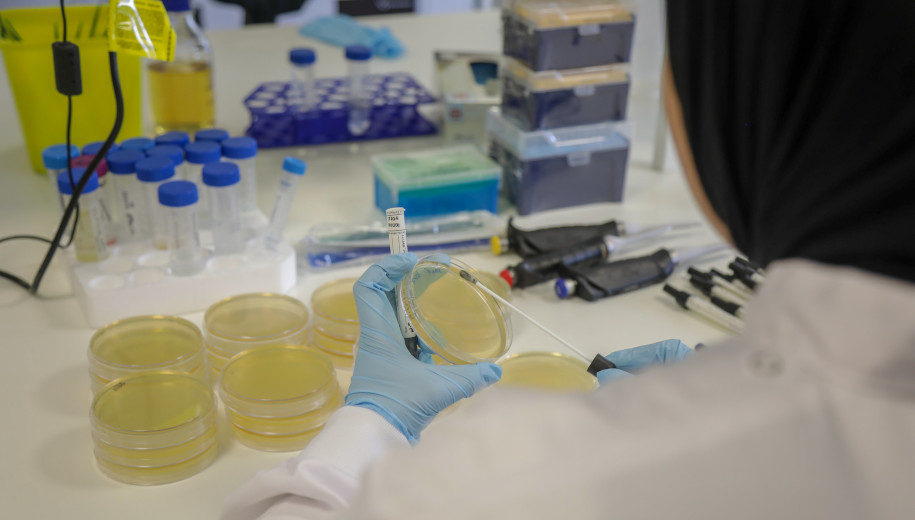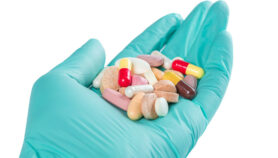19/02/21
Antibiotic resistance spirals in developing countries

By: Sanjeet Bagcchi
Send to a friend
The details you provide on this page will not be used to send unsolicited email, and will not be sold to a 3rd party. See privacy policy.
[NEW DELHI] Progress made against antimicrobial resistance (AMR) is among the casualties of the COVID-19 pandemic, according to a new report which says that misuse or overuse of antibiotics has resulted in countries reporting increasingly high rates of resistance on drugs used to treat common infections.
Resistance to first-line antimicrobials is emerging among the pathogens that cause HIV, malaria and typhoid fever, threatening global progress on health, particularly in low- and middle-income countries (LMICs), said The State of the World’s Antibiotics in 2021, released this month by the research firm Center for Disease Dynamics, Economics & Policy (CDDEP).
Ramanan Laxminarayan, director of CDDEP in Washington D.C., tells SciDev.Net that the “per capita antibiotic consumption in the LMICs is lower than in high-income countries despite a higher infectious disease burden; however, consumption rates are rapidly converging. These trends reflect both better access to antibiotics for those who need them and increases in inappropriate antibiotic use”.
According to the report, since 2015, antimicrobial resistance has levelled off in some high-income countries but continues to rise in many LMICs, where access to antibiotics has risen with increases in gross domestic product per capita.
For HIV, access to antiretroviral drugs has grown in the last 10 years (26 million people with HIV infection could access antiretroviral drugs as of June 2020), saving lives but also increasing resistance to HIV drugs, said the report.
On malaria, the report says that “the 2020 targets of WHO’s Global Malaria Strategy on the reduction of disease prevalence and death were missed by 37 per cent and 22 per cent, respectively. The surveillance of resistance to common antimalarial drugs is vital to ensure treatment efficacy and make progress toward malaria elimination”.
In 2000—2015, the per capita consumption of WHO-specified Watch antibiotics (antibiotics with high potential for resistance but critically important for human health) showed a 91 per cent increase globally. During that period, the LMICs showed a 165 per cent increase in per capita antibiotic consumption — from 2.0 to 5.3 defined daily doses (DDDs) per 1,000 people — as compared with a 27.9 per cent increase in high-income countries (6.1 to 7.8 DDDs).
In Brazil, the use of antibiotics had increased from 2,535 DDDs to 6,763 DDDs during the same period, and in China the increase was from 1,910 to 3,060 DDDs. The corresponding increase for Francophone West African countries was from 557 to 2,112 DDDs and for Saudi Arabia from 5,647 to 10,934 DDDs.
Antimicrobials are now readily available without a prescription in several Asian and African LMICs, says the report. “Although many countries require prescriptions for such drugs, oversight and enforcement of the laws and policies are lax. As a result, patients seeking antimicrobials can bypass clinicians and diagnostics and directly purchase antimicrobials, which may not be clinically appropriate.”
The report stressed the importance of vaccines in combating antimicrobial resistance, as vaccines can prevent specific diseases and thereby reduce the use of antibiotics to treat them. “Many vaccines in current use (against pneumococcal disease, seasonal influenza, typhoid, and rotavirus) and in the pipeline (against tuberculosis, shigella, and Gram-negative bacteria) can help reduce the AMR disease burden and thereby save lives,” said the report.
Video credit: Center for Disease Dynamics, Economics & Policy.
The other major factor driving resistance is the widespread use of antibiotics in agriculture and aquaculture. “The fast-growing demand for animal protein has increased the use of antimicrobials in the animal health sector, where these drugs are used not only to treat and prevent infection but also to promote rapid growth,” said the report.
“This is a comprehensive report on the status of global antimicrobial resistance and its drivers,” says Bipin Adhikari, a researcher at the Mahidol-Oxford Tropical Medicine Research Unit, Mahidol University, Bangkok. “To ensure AMR-related programmes and activities are effective, a tailored approach based on the AMR indices is critical.”
“To ensure AMR-related programmes and activities are effective, a tailored approach based on the AMR indices is critical”
Bipin Adhikari, Mahidol University
Steven Blanke, a professor of microbiology at the University of Illinois, US, tells SciDev.Net that while initiatives to curb resistance seem to have flattened the rate of antimicrobial resistance in affluent countries, the rate and scope of antimicrobial resistance have rocketed alarmingly in lower income nations as access to life-saving antibiotics improves.
“This phenomenon represents a failure in policies and operational practices to regulate the administration of life-saving drugs,” Blanke says. “Widespread education about the dangers of overuse and misuse of antimicrobials in agriculture and clinical practice must be broadly implemented.”
This piece was produced by SciDev.Net’s Asia & Pacific desk.















